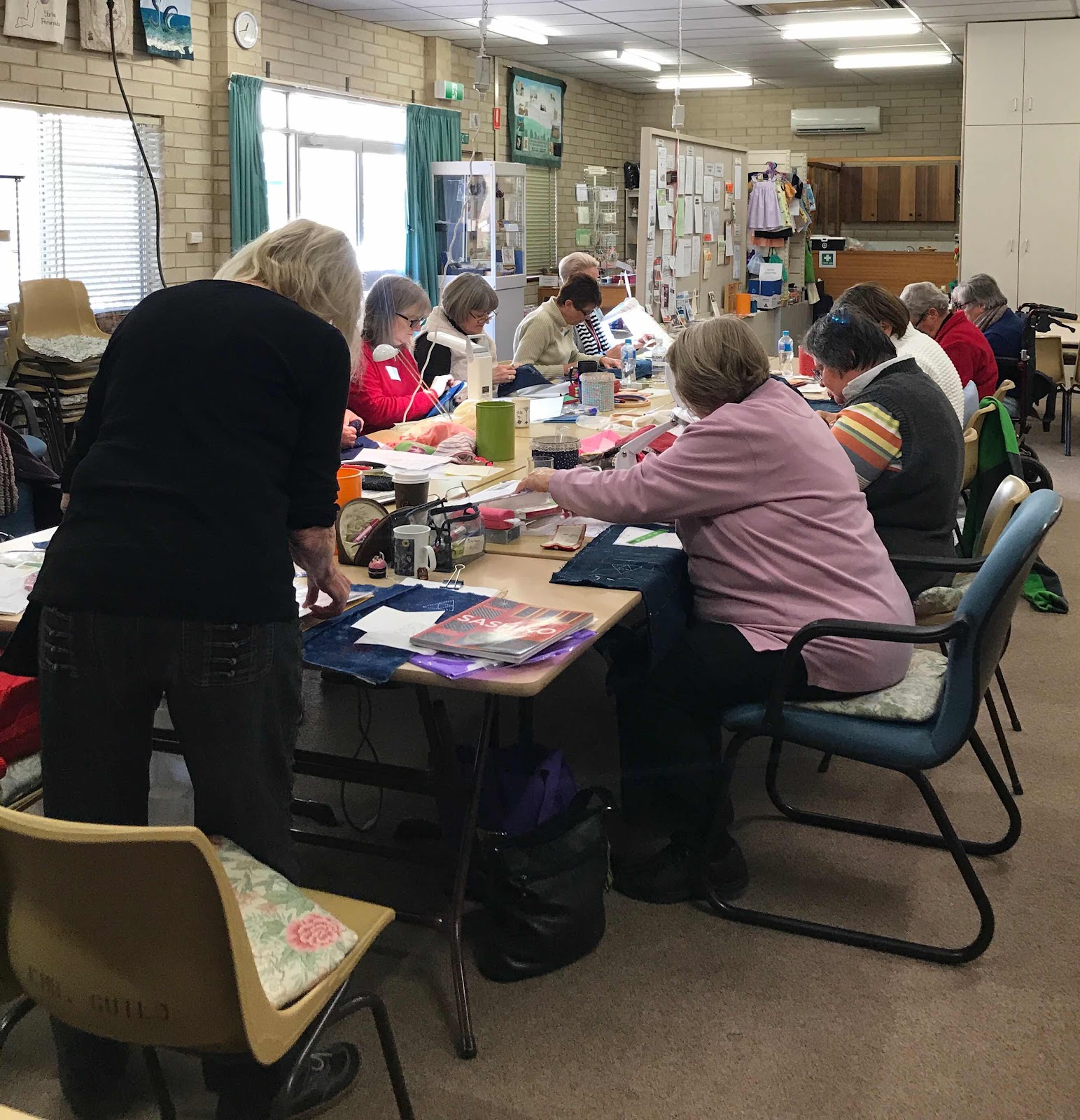
I have a number of printed Sashiko cloths in my stash, so when
Barbara Mullan offered a Sashiko workshop at the Guild, I jumped at the chance to enrol, even changing tickets I had for a
Voces8 concert at Ukaria in order to go!
I didn't regret my decision.
An enthusiastic and eager group of us gathered on the day. Barbara had thoughtfully reorganised the tables so we could see and hear each other.
I had read my preparation instructions carefully and assembled a bag with the items. The day before the class I bought myself the last item - a fat quarter of blue fabric. My mind not being what it once was, I did not immediately put the fat quarter into the bag I had prepared, so found myself at the class without my fabric!
 Barbara, of course, came to the rescue, with some fabric she had
indigo-dyed some time ago at a class at Marden TAFE. It was lovely, and I only used the minimum I needed.
.
Barbara had prepared templates of some Sashiko patterns. The suggestion was that we choose 4 of these and work them on four squares of fabric, backed with cotton.
Barbara, of course, came to the rescue, with some fabric she had
indigo-dyed some time ago at a class at Marden TAFE. It was lovely, and I only used the minimum I needed.
.
Barbara had prepared templates of some Sashiko patterns. The suggestion was that we choose 4 of these and work them on four squares of fabric, backed with cotton.
I had my cotton, so tacked it on to my four squares (well, rectangles, anyway) and began with a very simple triangle.
We learned the conventions (rules?) of evenness of stitch, even numbers of stitches and dealing with corners. All these were new to me and invaluable in doing anything with the printed pieces I have.
I tried to move from simple to more complex. I had variegated Sashiko thread in blues and yellow/orange/red as well as white. I had thought to use the blue, but it didn't show up well on Barbara's lovely hand-dyed cloth so I went around the original blue,

which worked, I thought, quite well.
I then switched entirely to yellow/orange/red for the last two pieces.


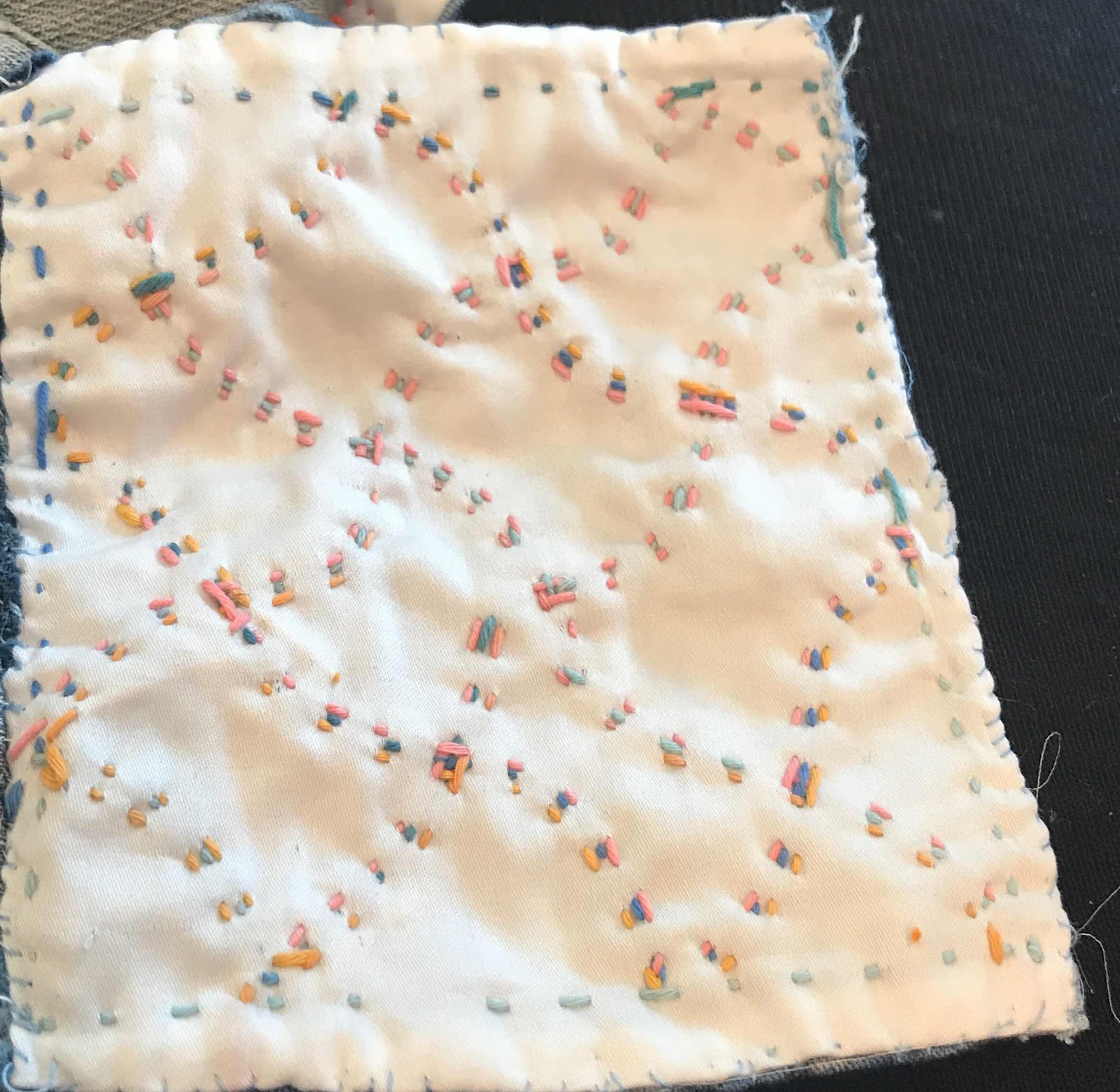
We learned too, how to finish the edges off with slip-stitch so that the backing did not show. Miss Monk, who first taught me slip stitch, would not be happy with my work here. I had, however, by now the germ of an idea of what I would do with these pieces, and it didn't require invisible slip stitch!
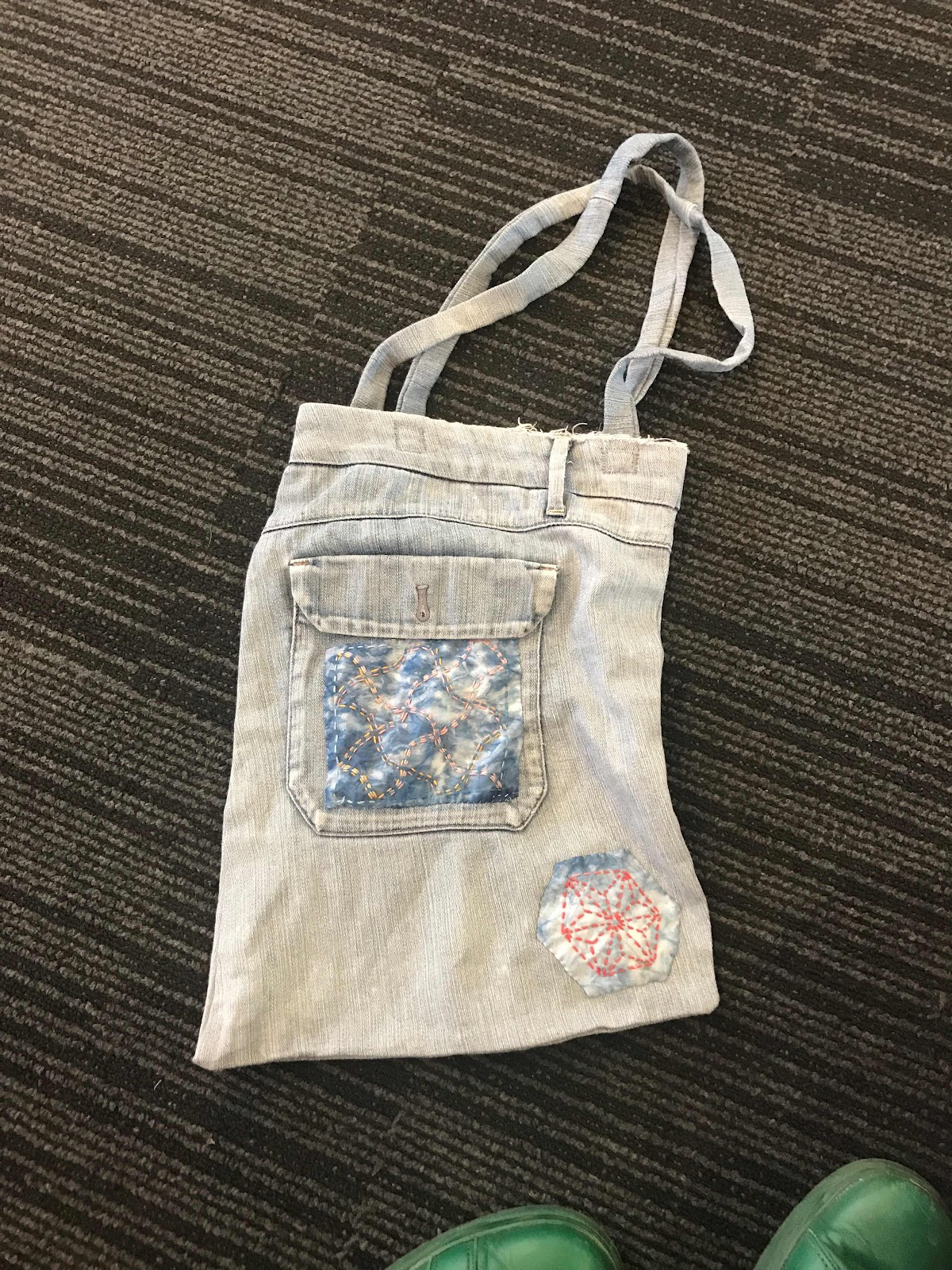

I dug out
a bag I had made ages ago (can it really have been 2011? Afraid so!) from an old pair of jeans and applied the patches.
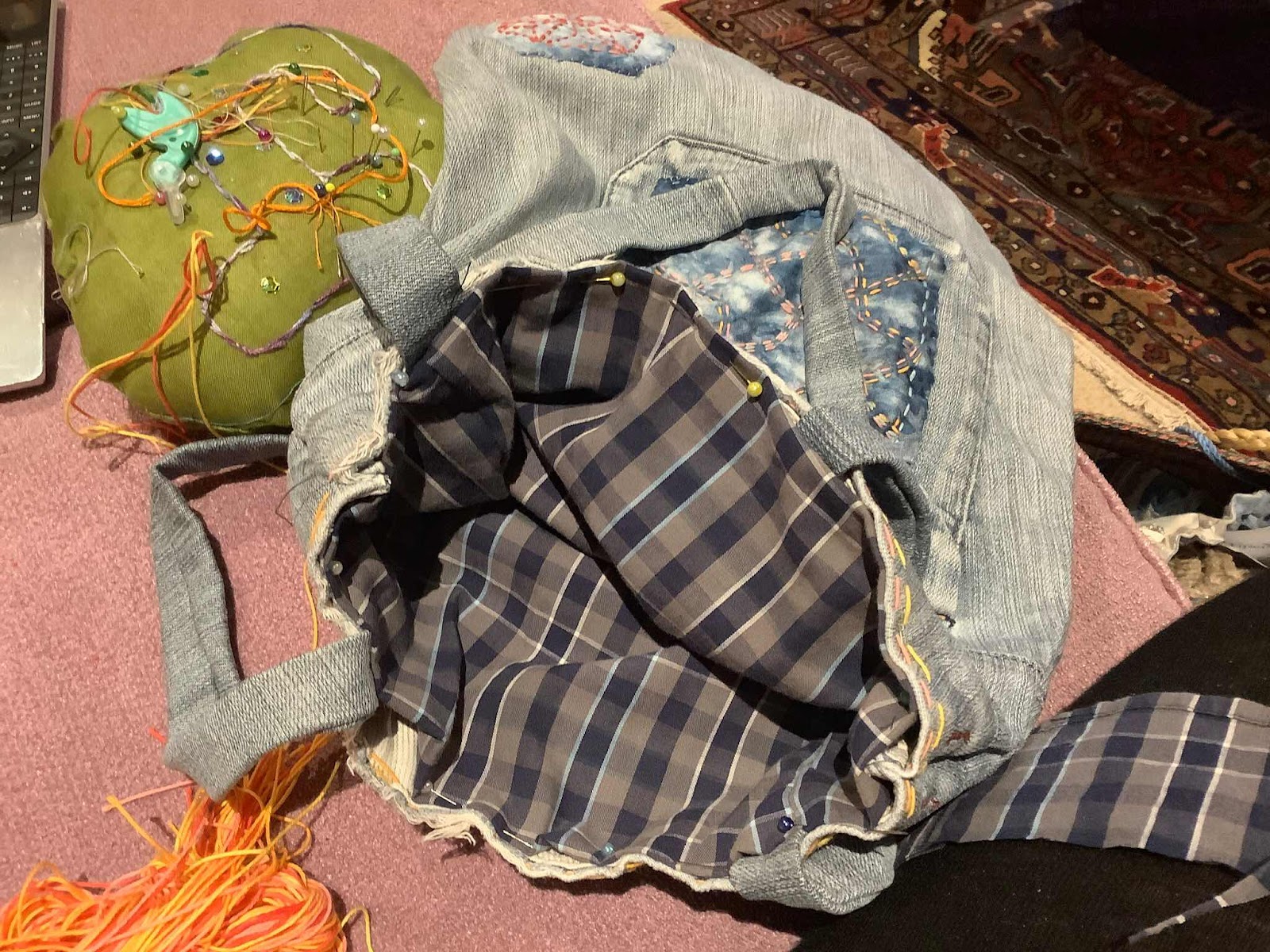
From my fabric stash I retrieved a shirt of Jim's that I had kept because I knew he would have wanted to be part of future projects.
The two fronts were a perfect shape for cutting a lining for this odd shaped bag and the colour was just right.
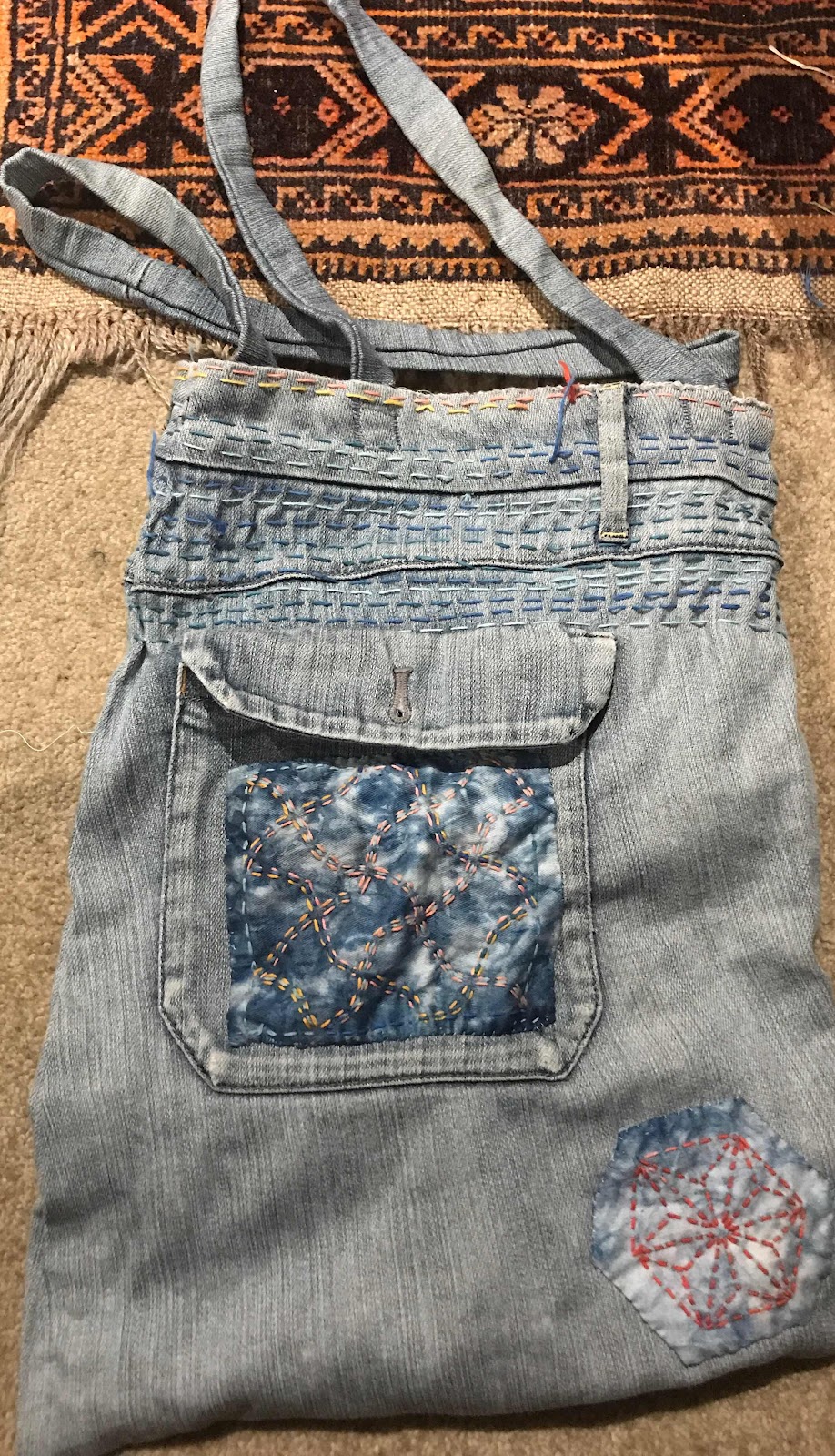
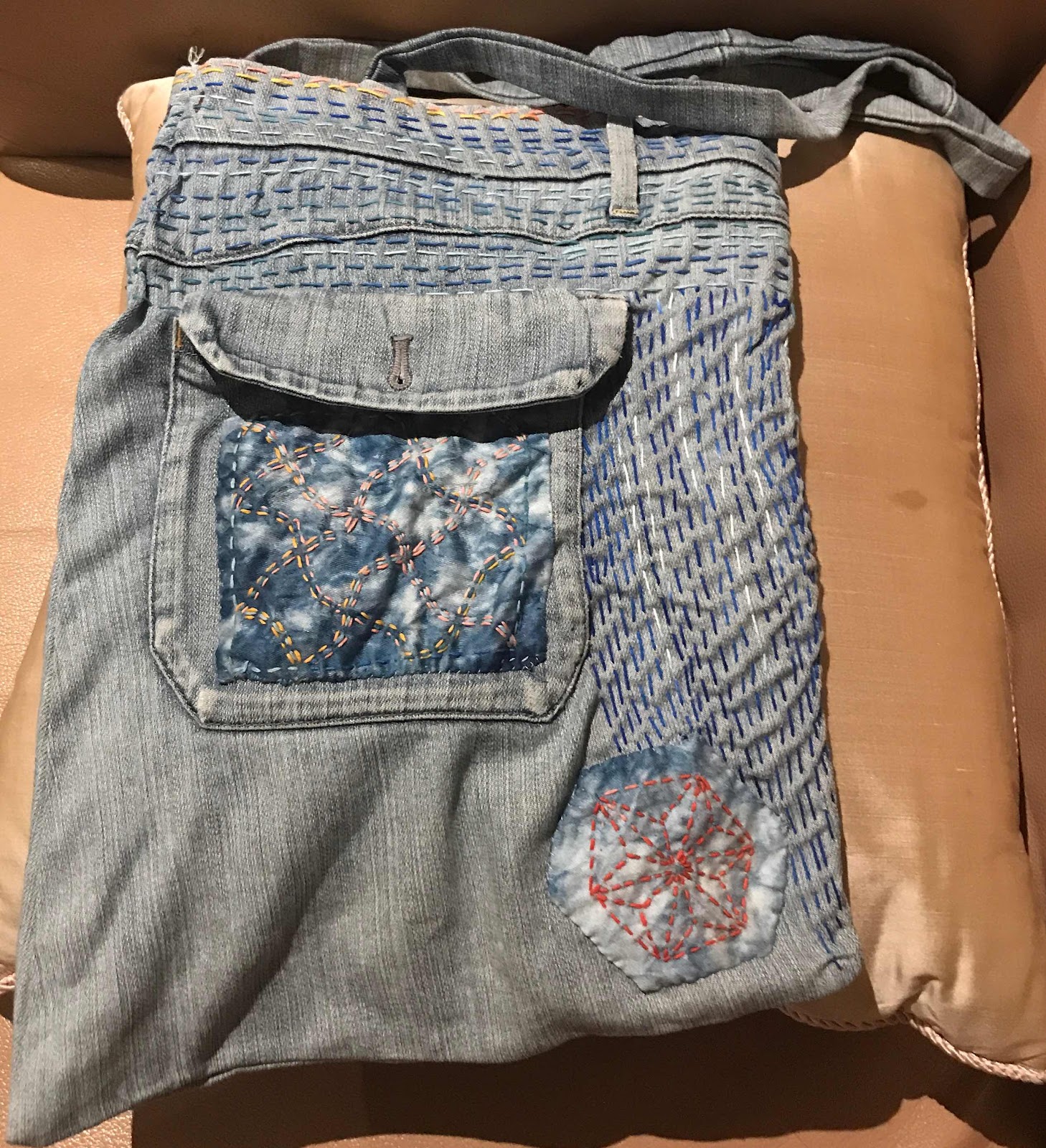
The original idea stopped here - but the bag cried out for more - so off I went, using, after an initial experiment, the blue thread.
I kept going
and going.
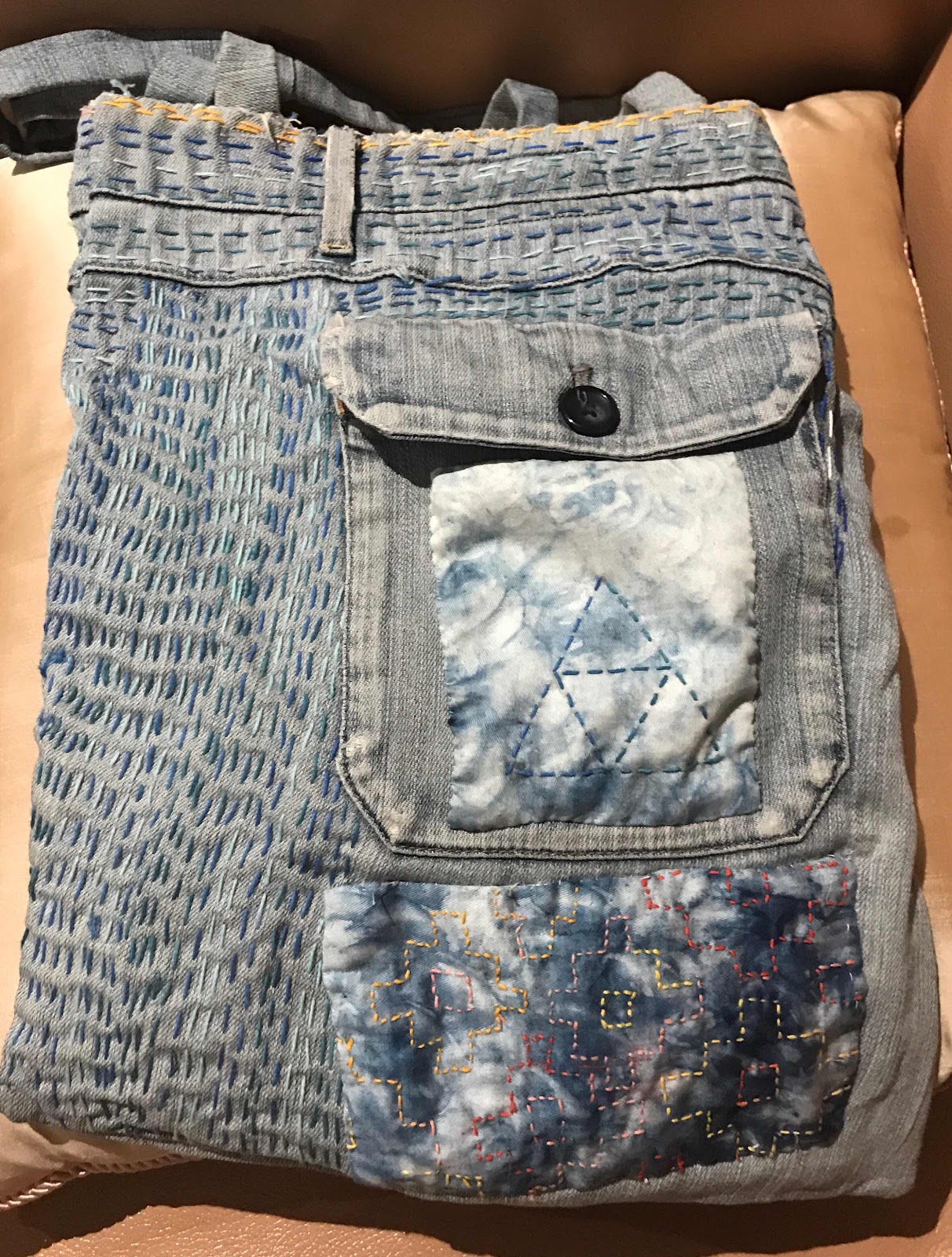

I attempted to cover the whole bag with running stitch, but beyond this point the bag twisted out of shape, so I stopped. I added a button to the pocket where one was missing.
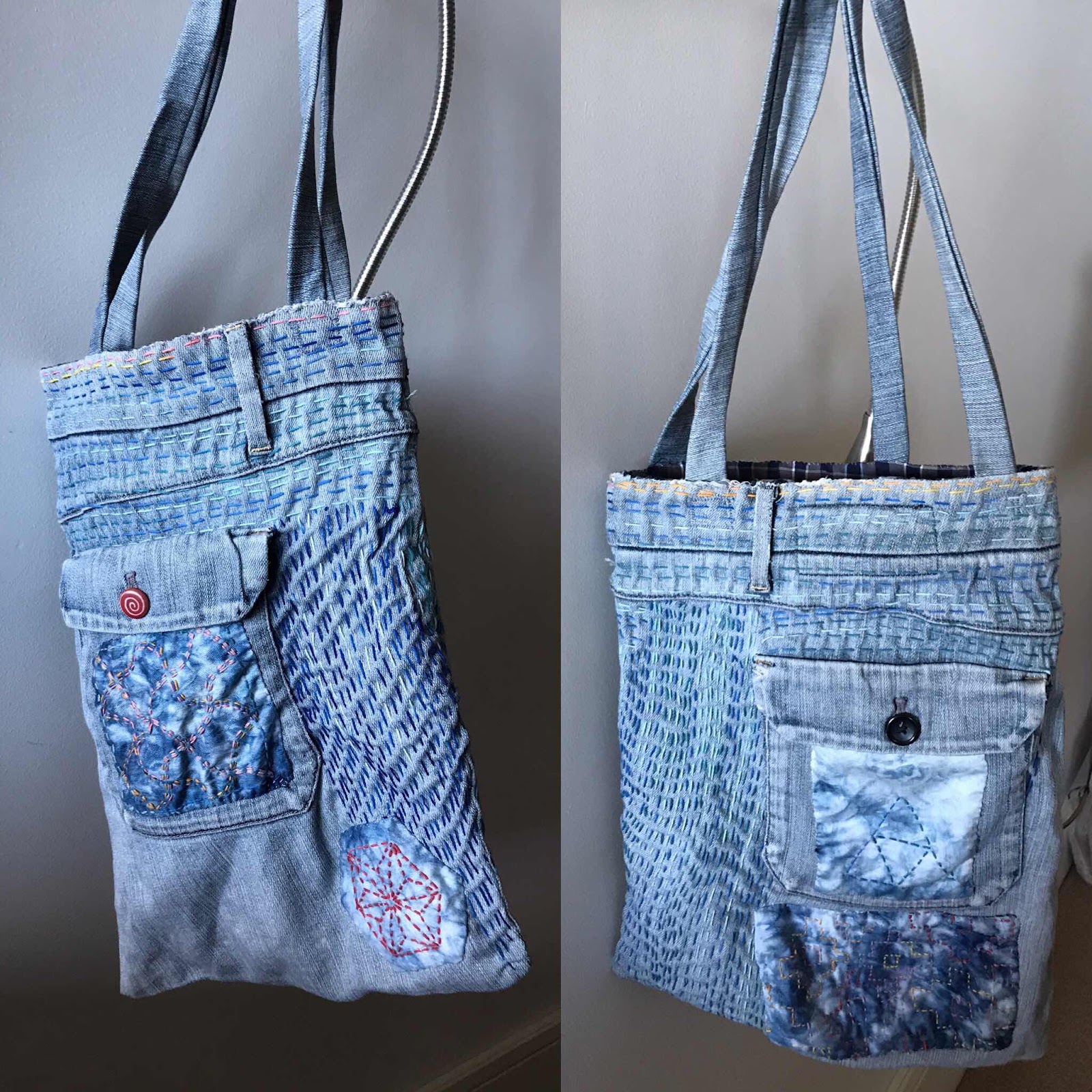
I'm not sure how and where this bag will end up being used, but I've had a lot of fun and learning making it.

 I decided to turn a couple of mine into pinwheels.
I decided to turn a couple of mine into pinwheels.